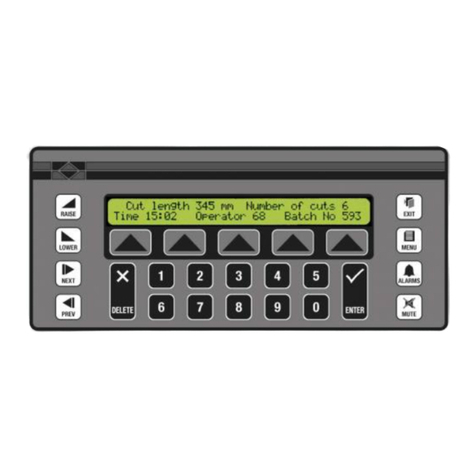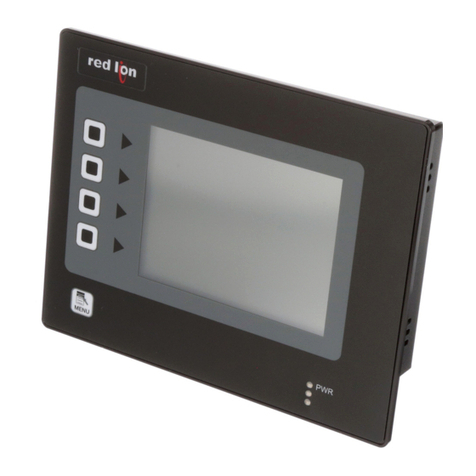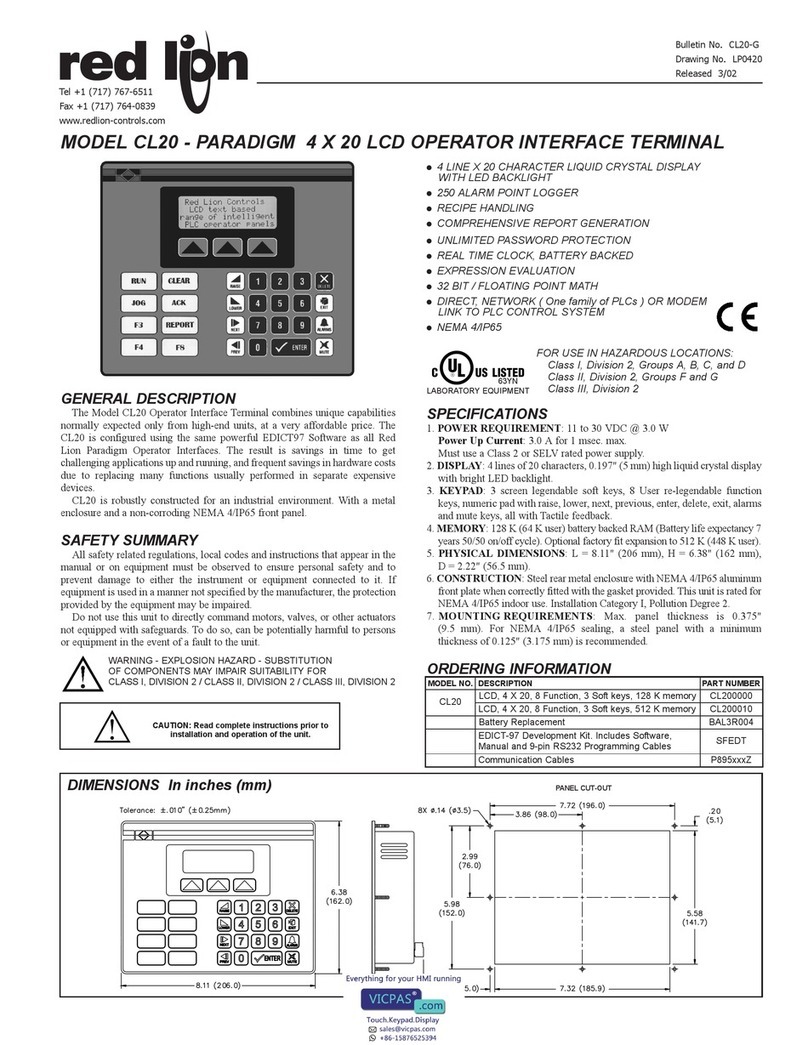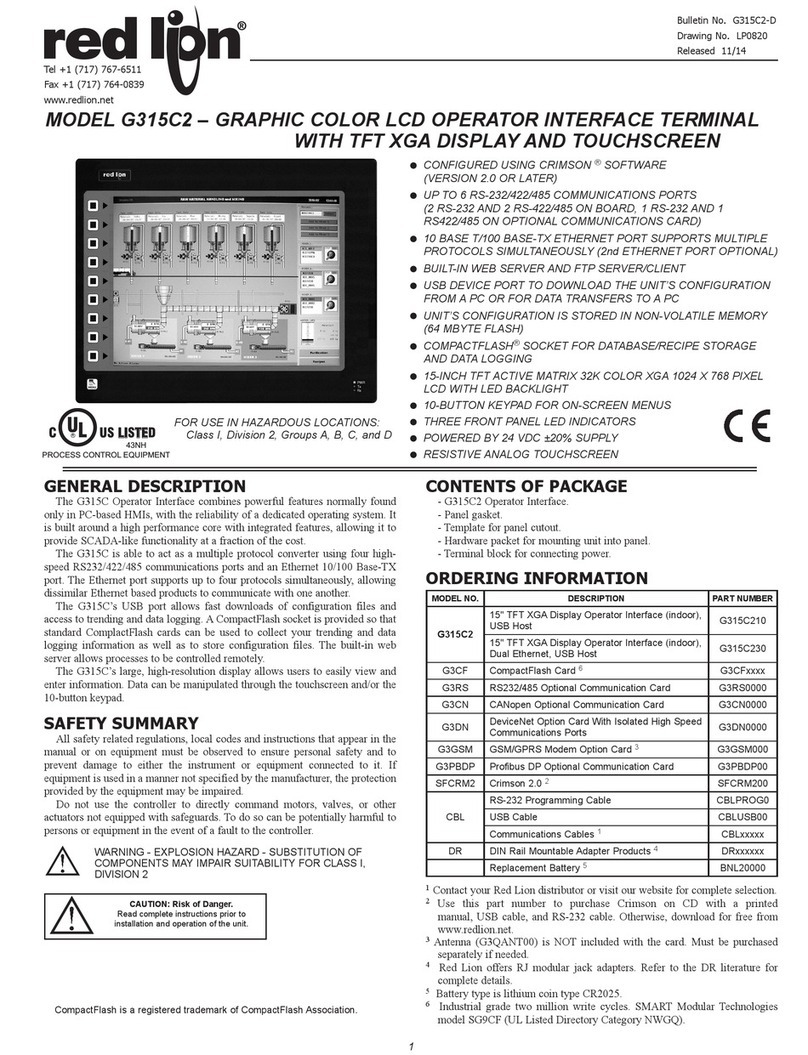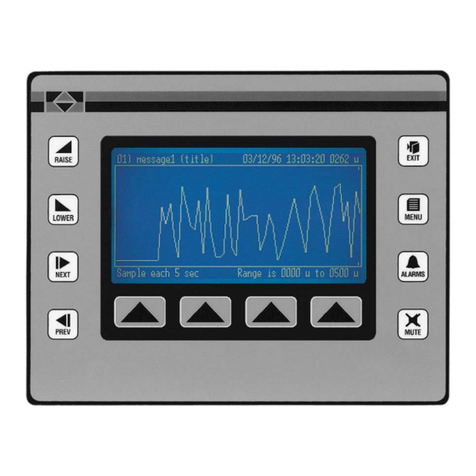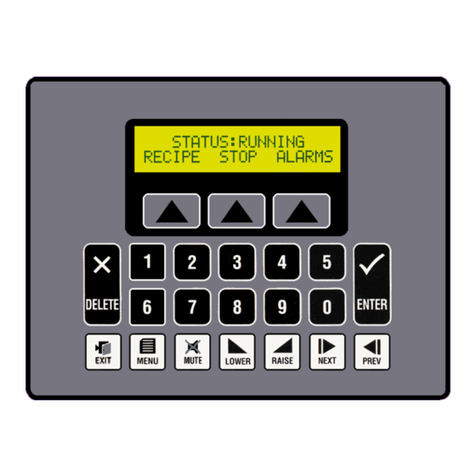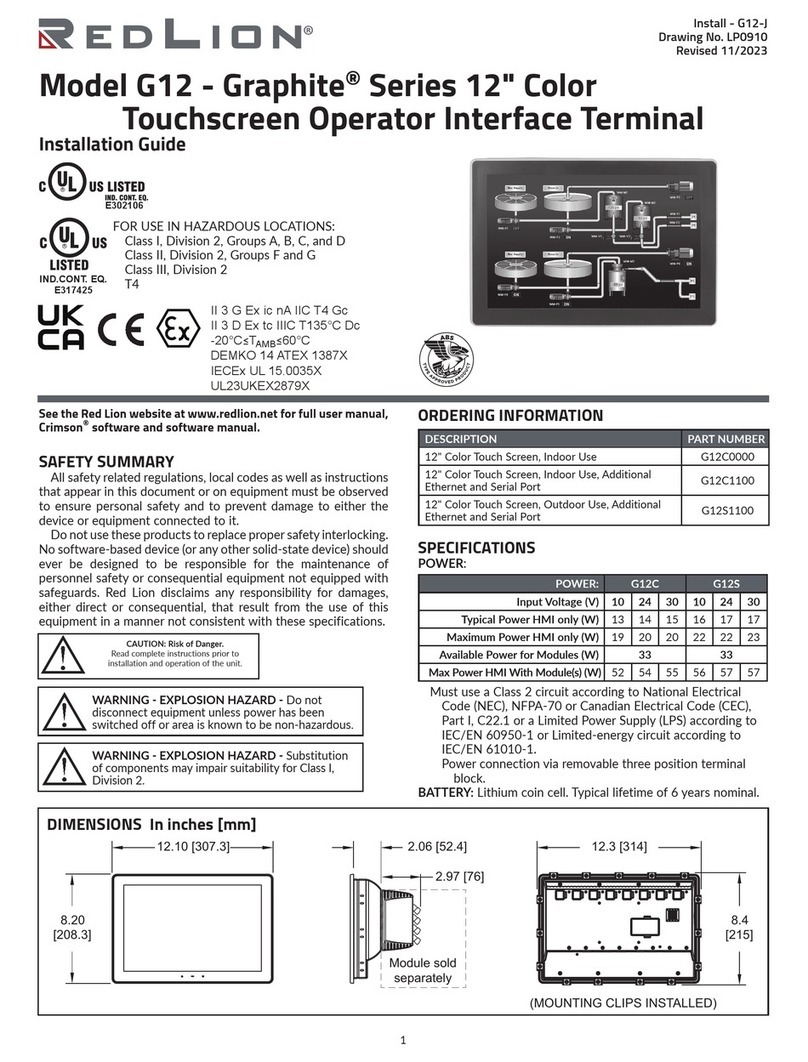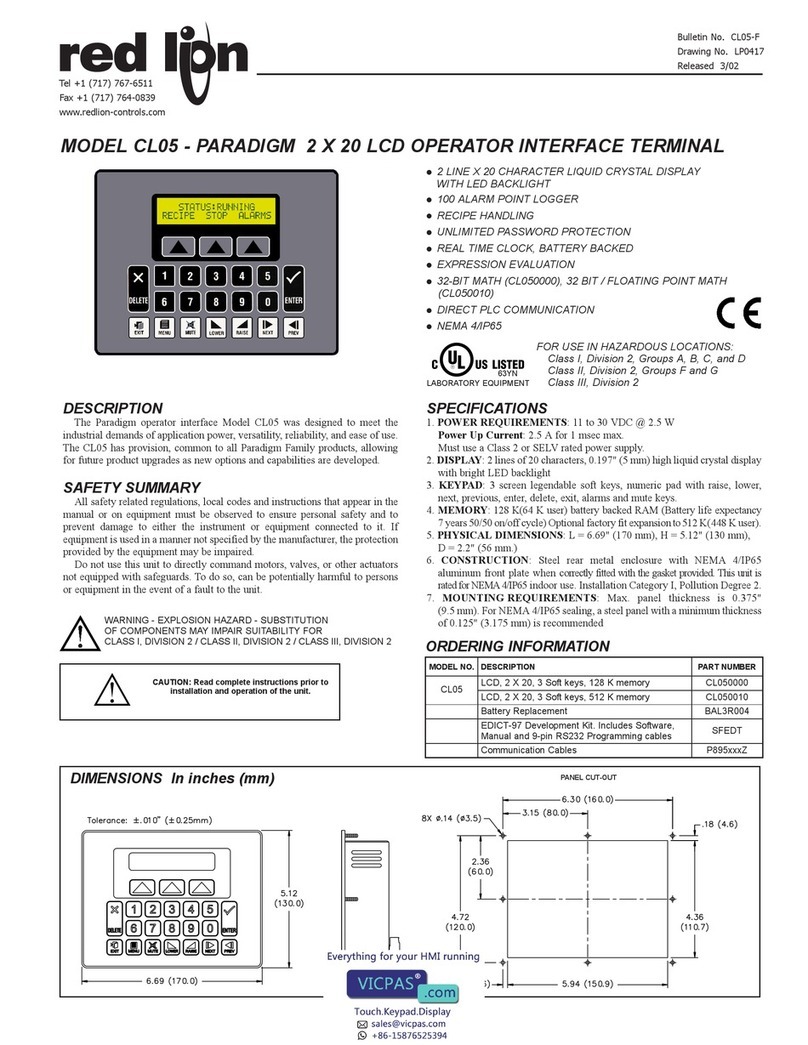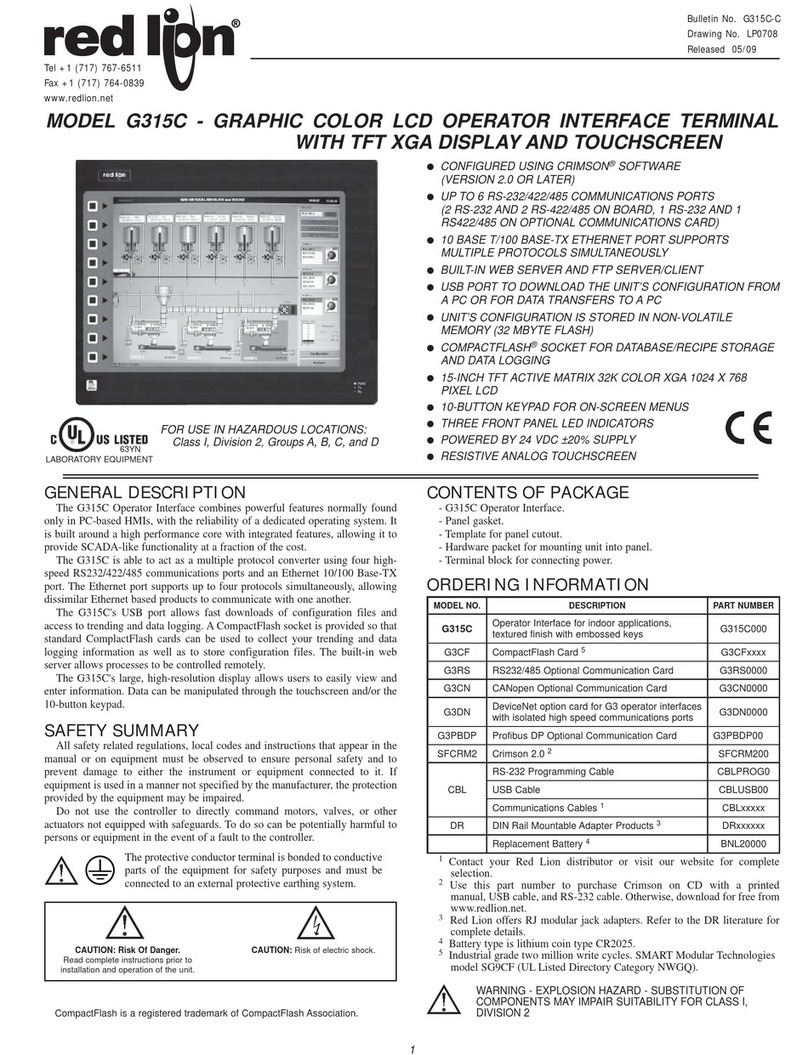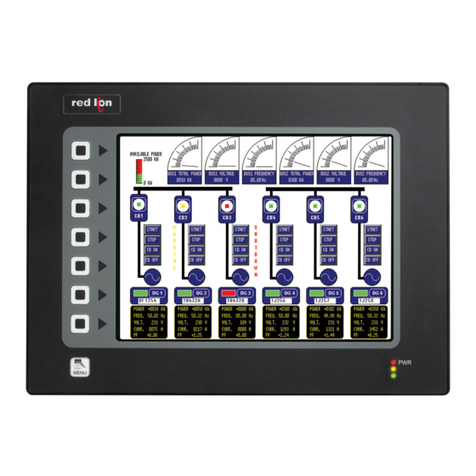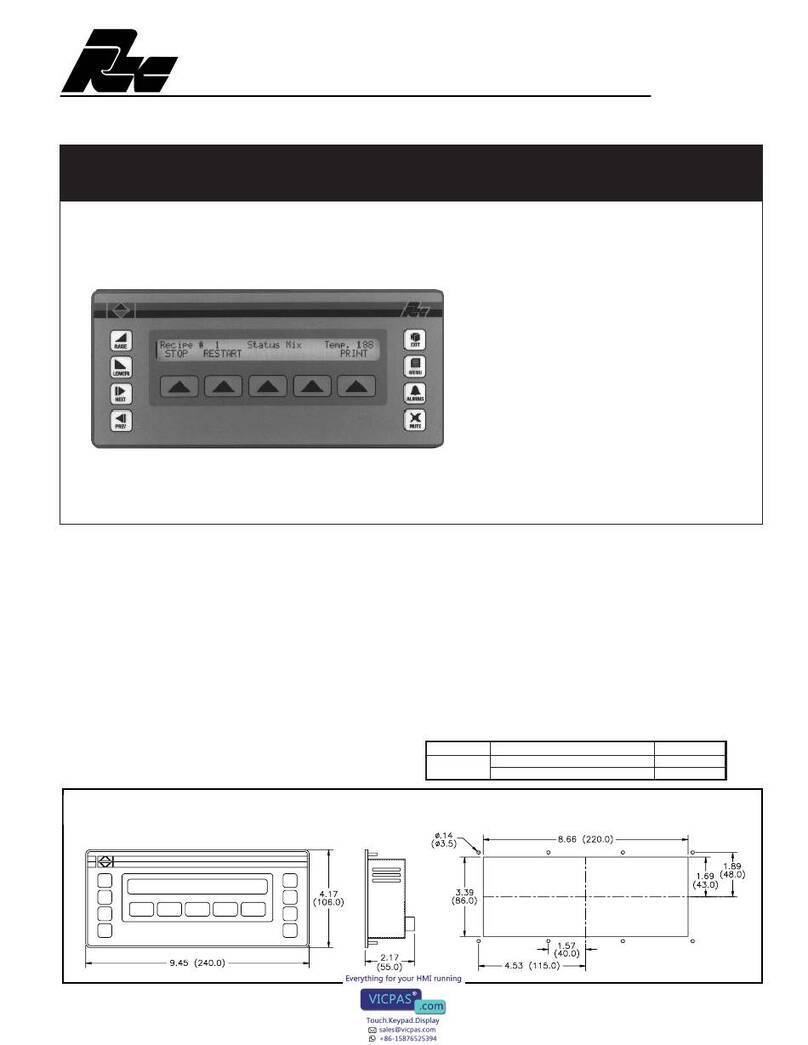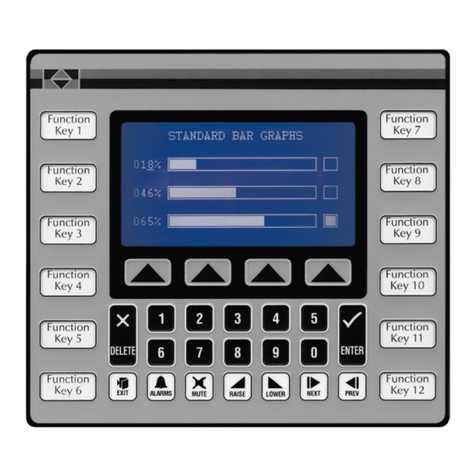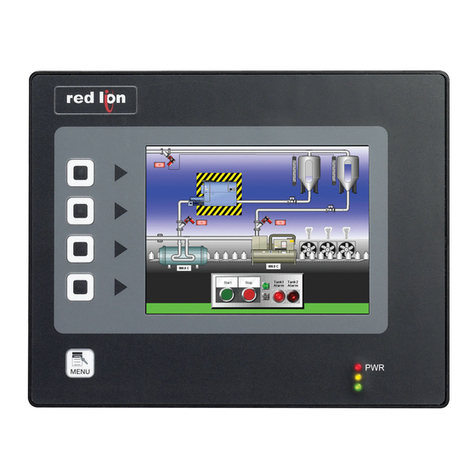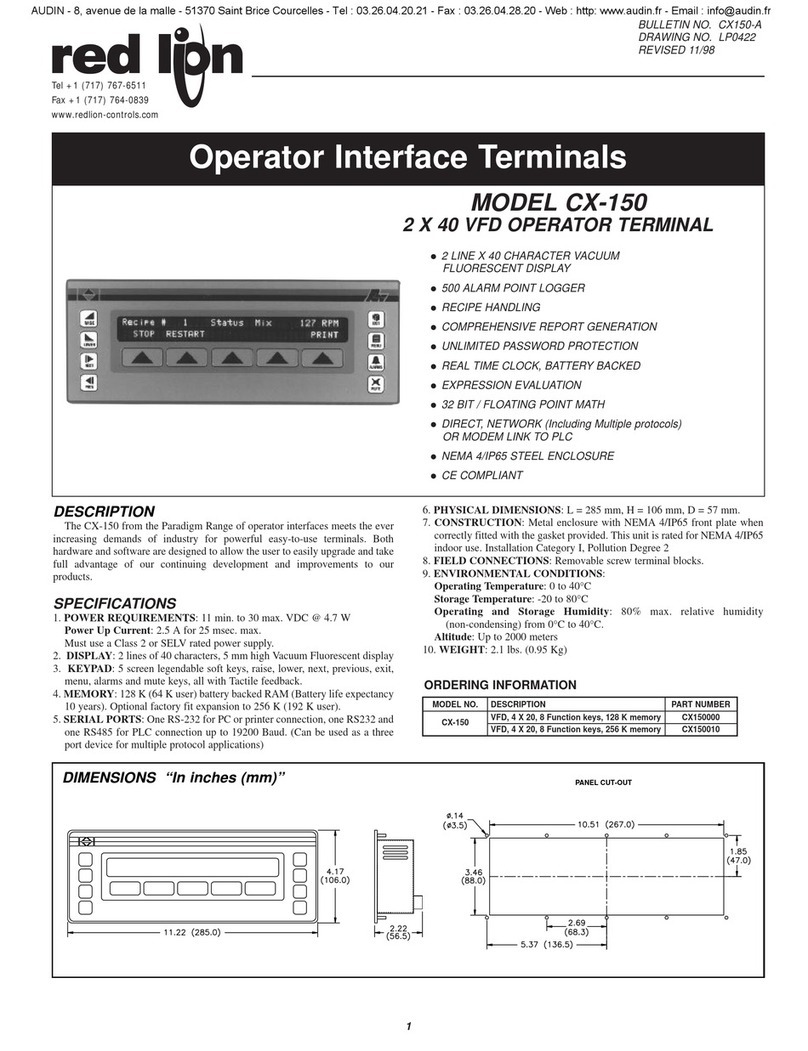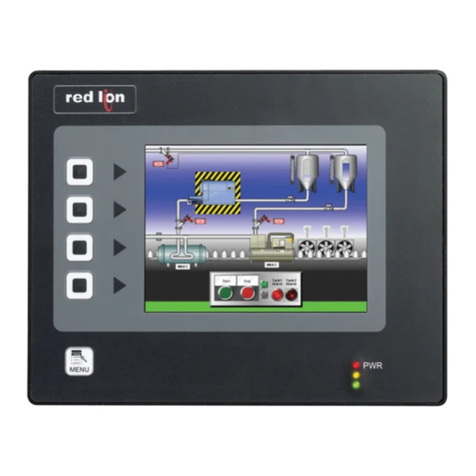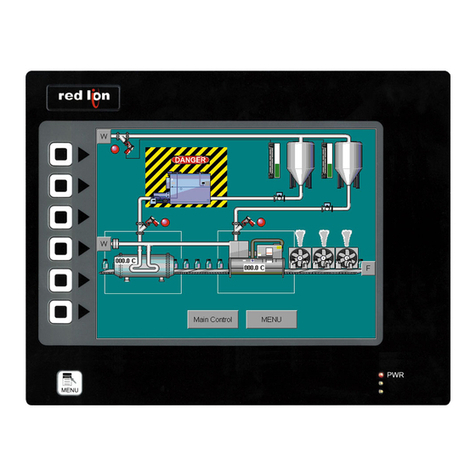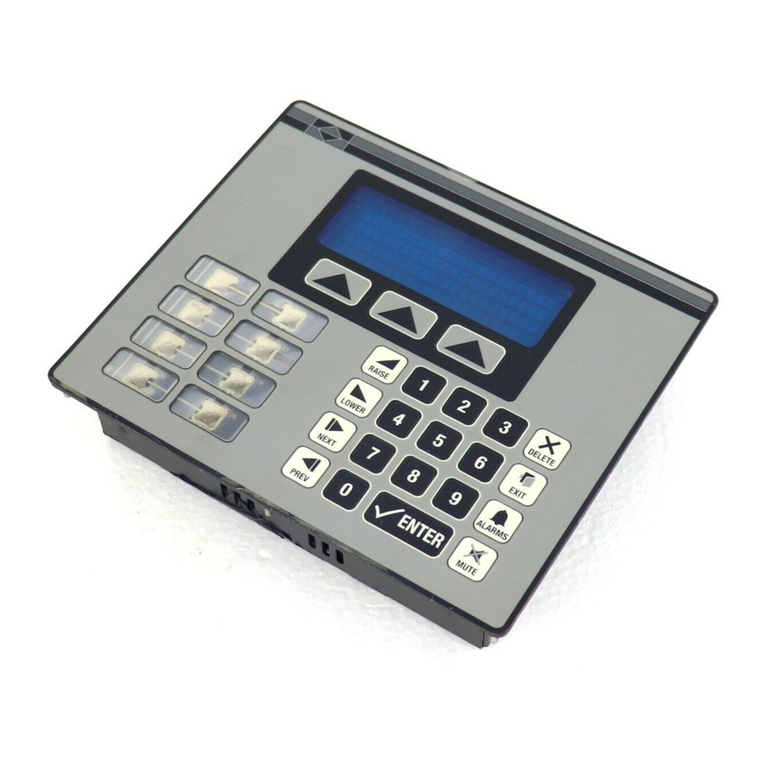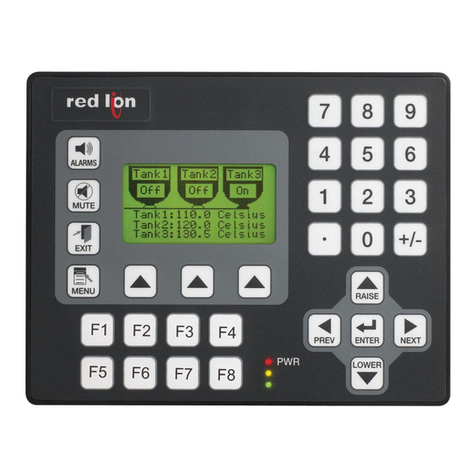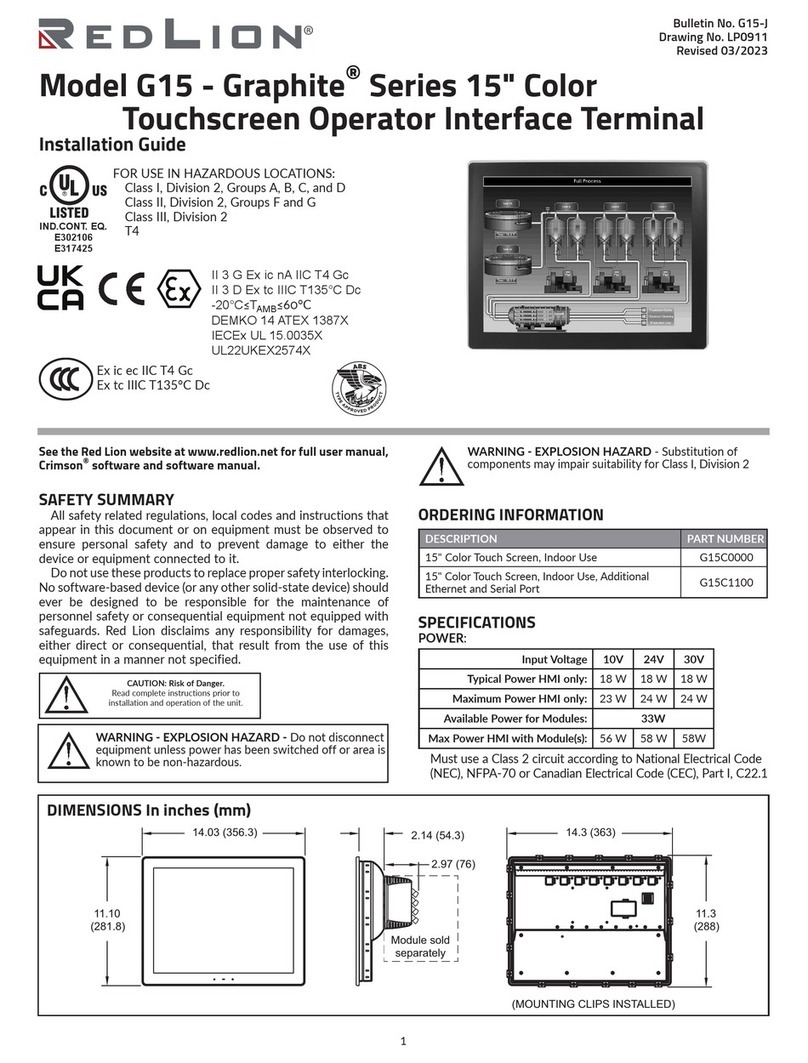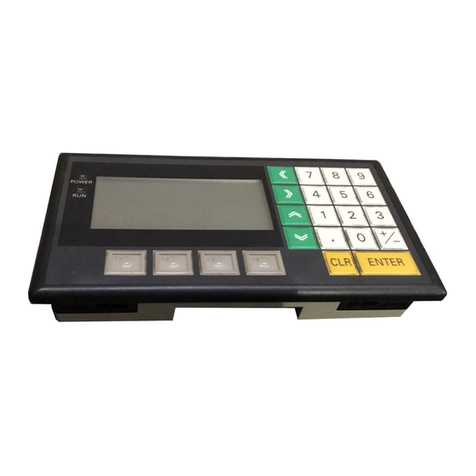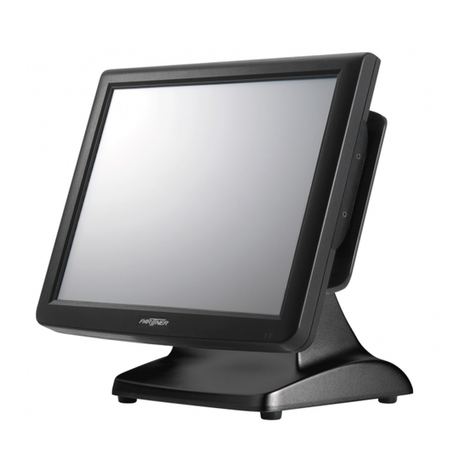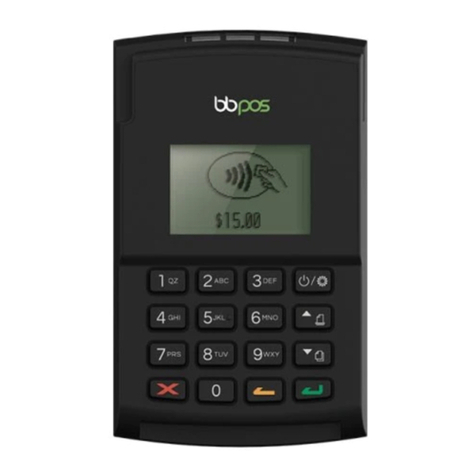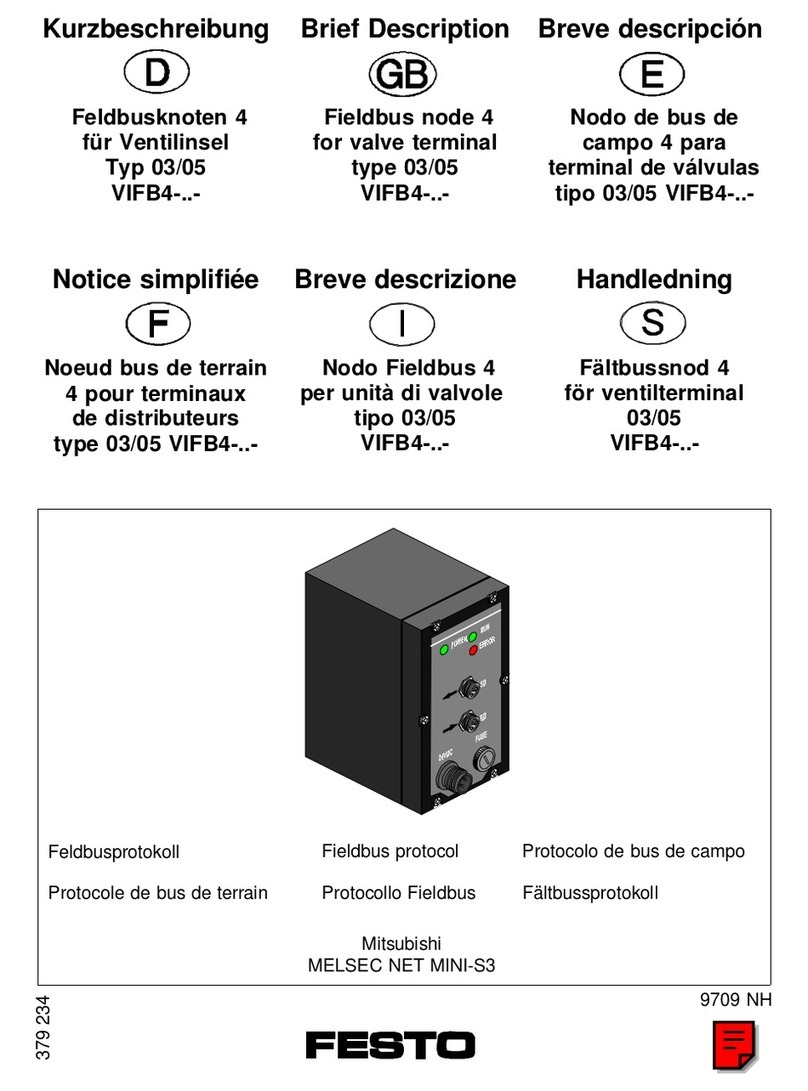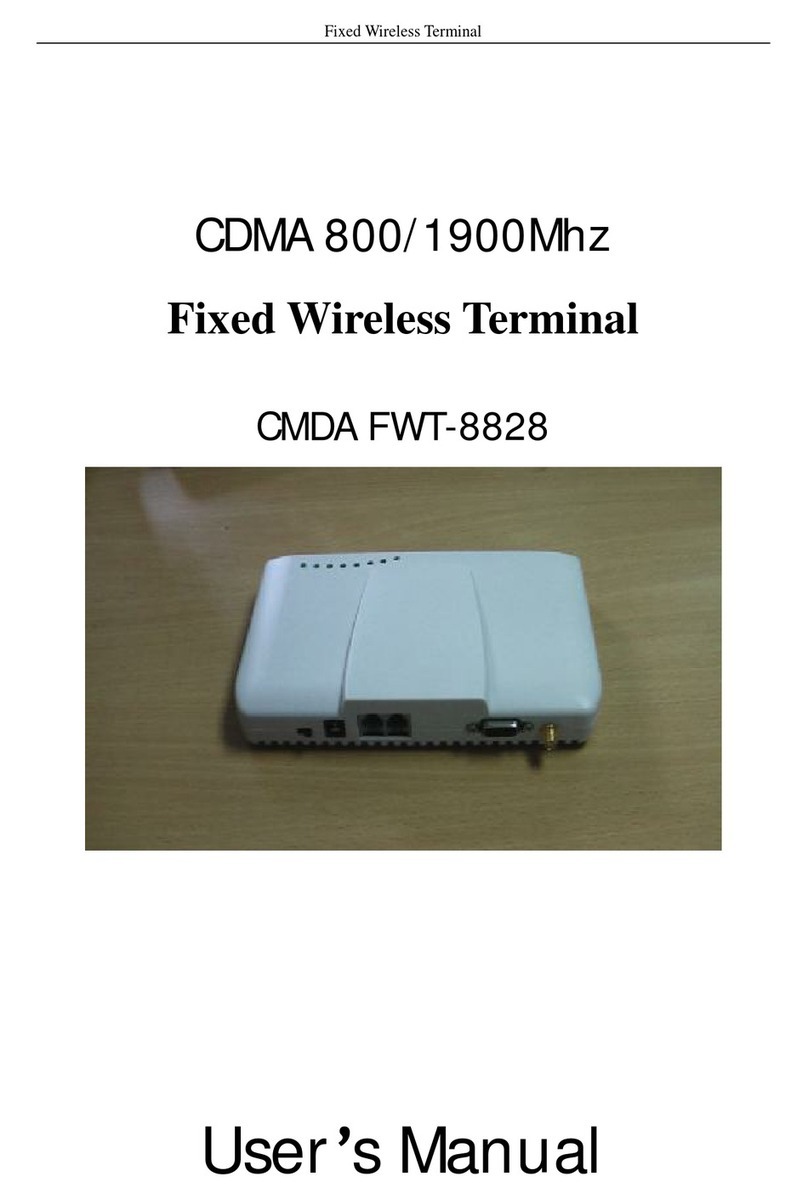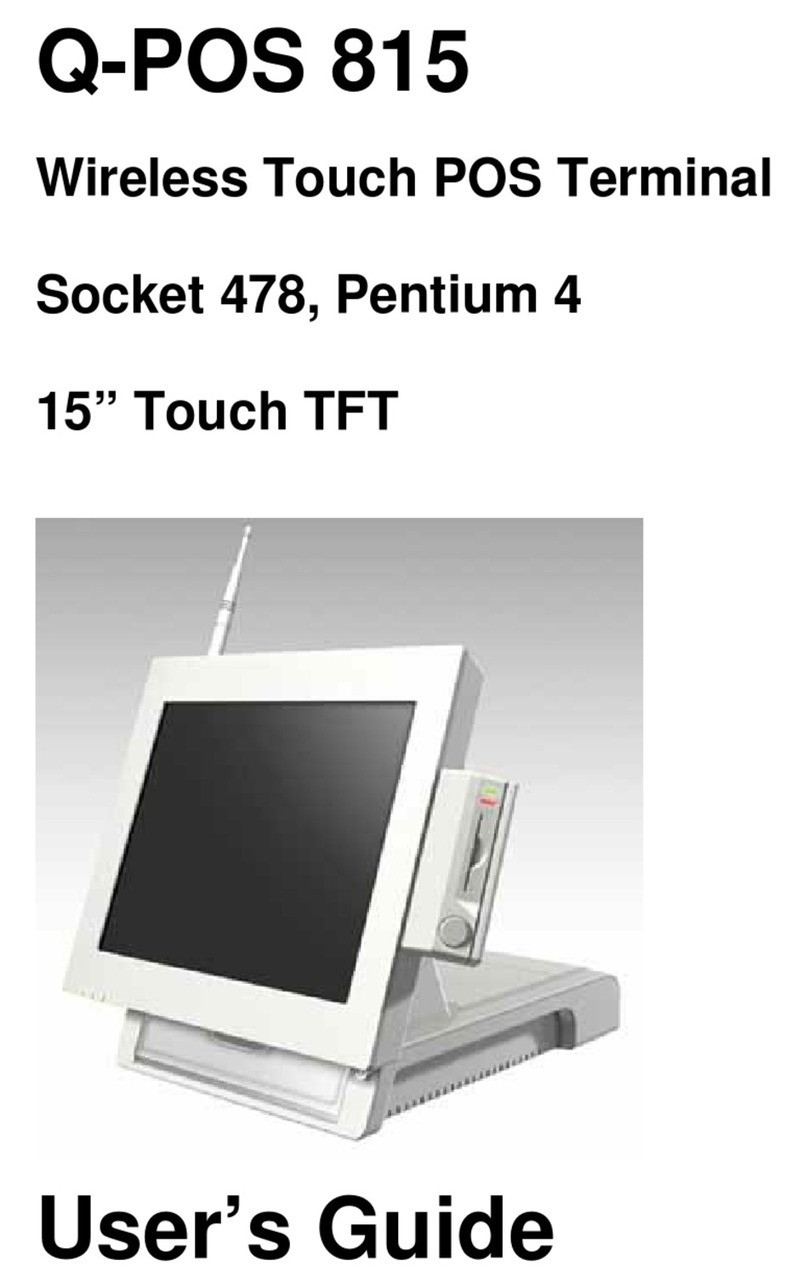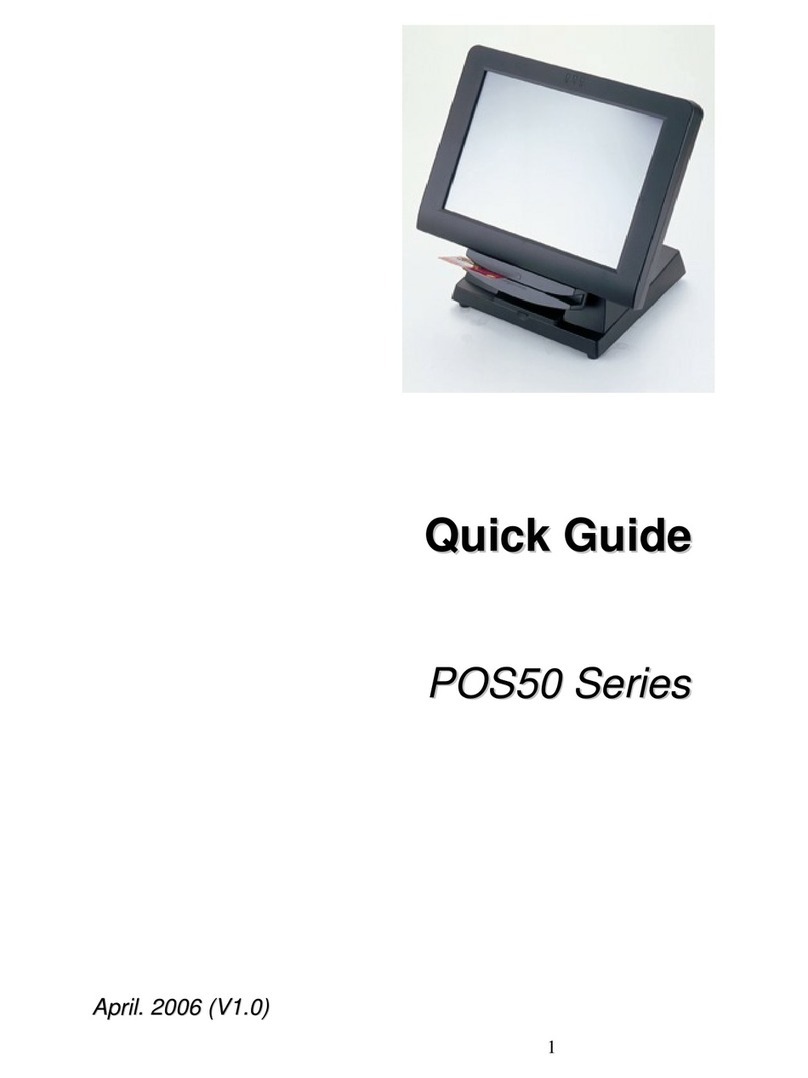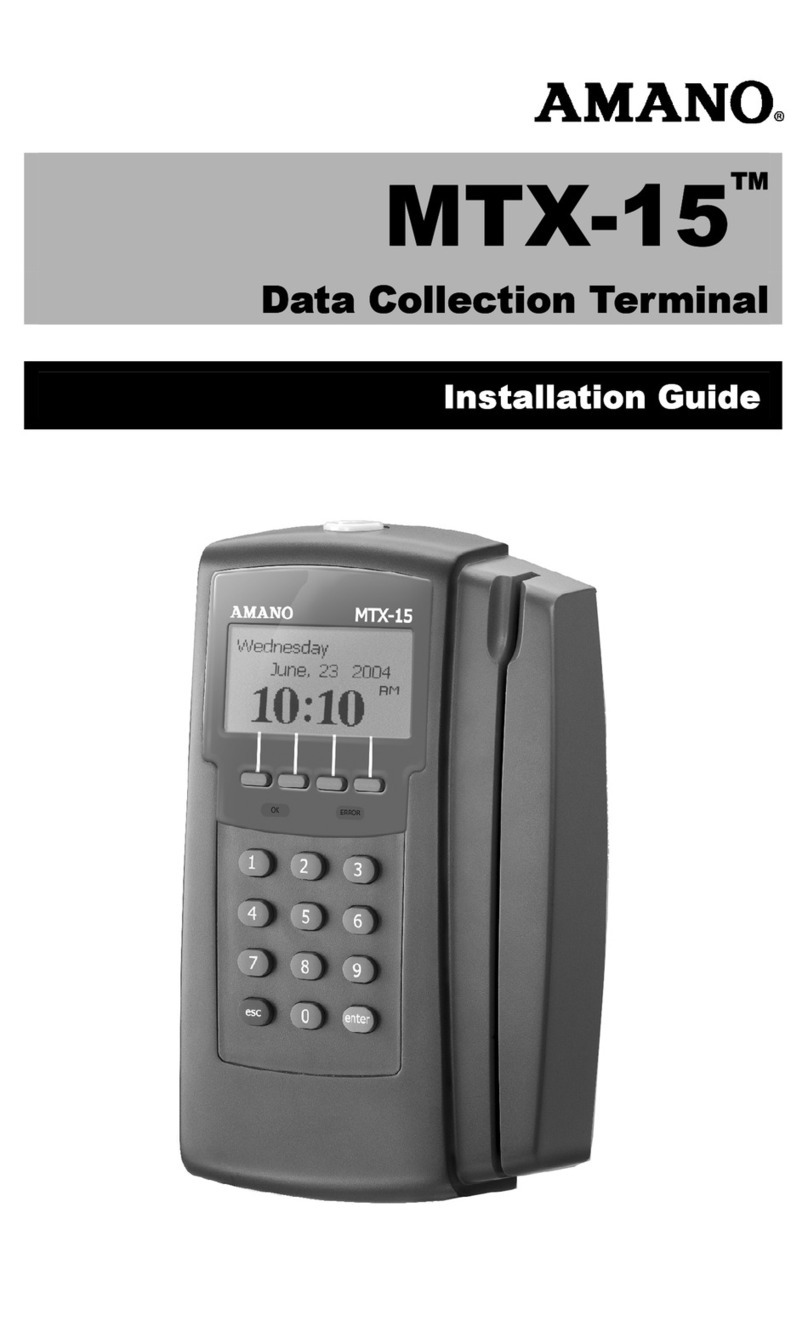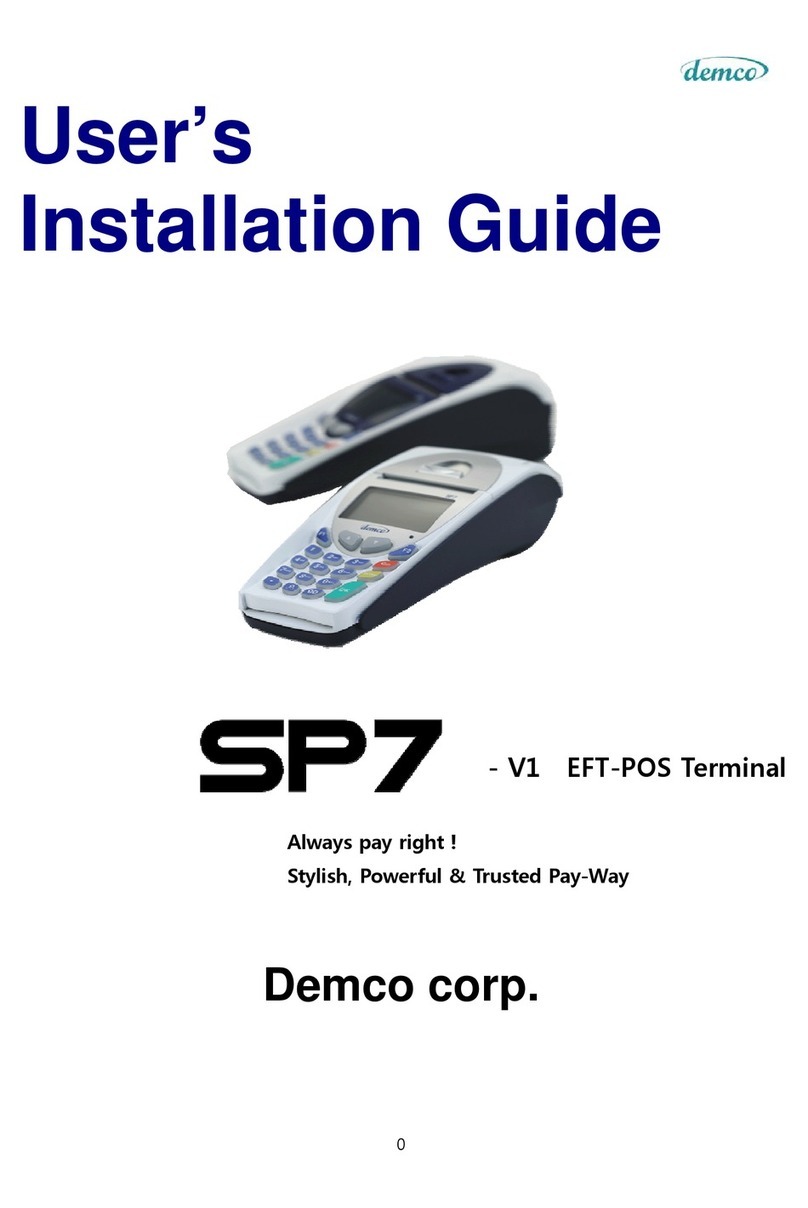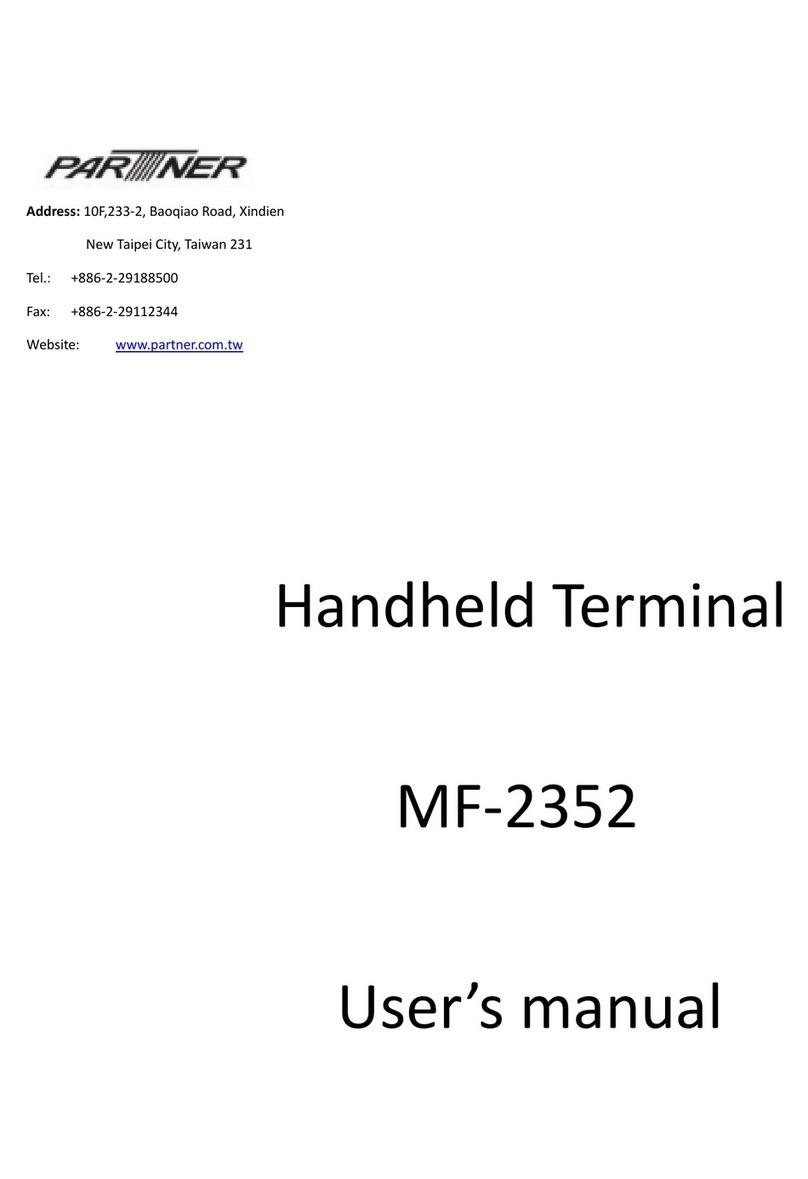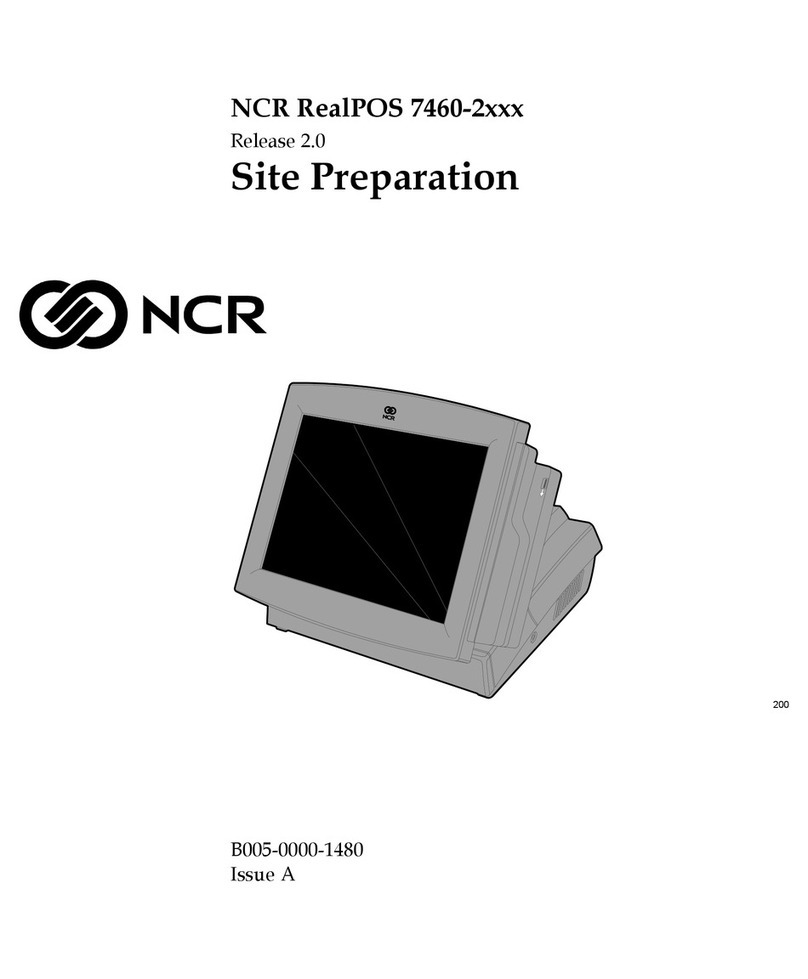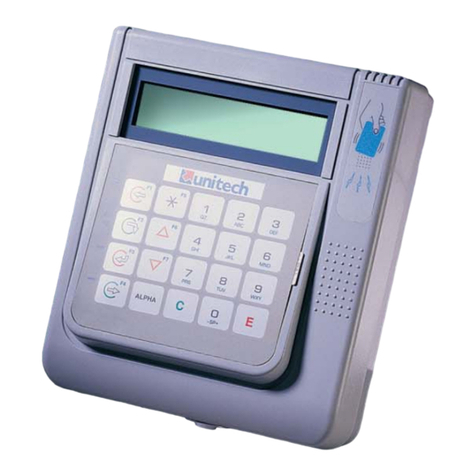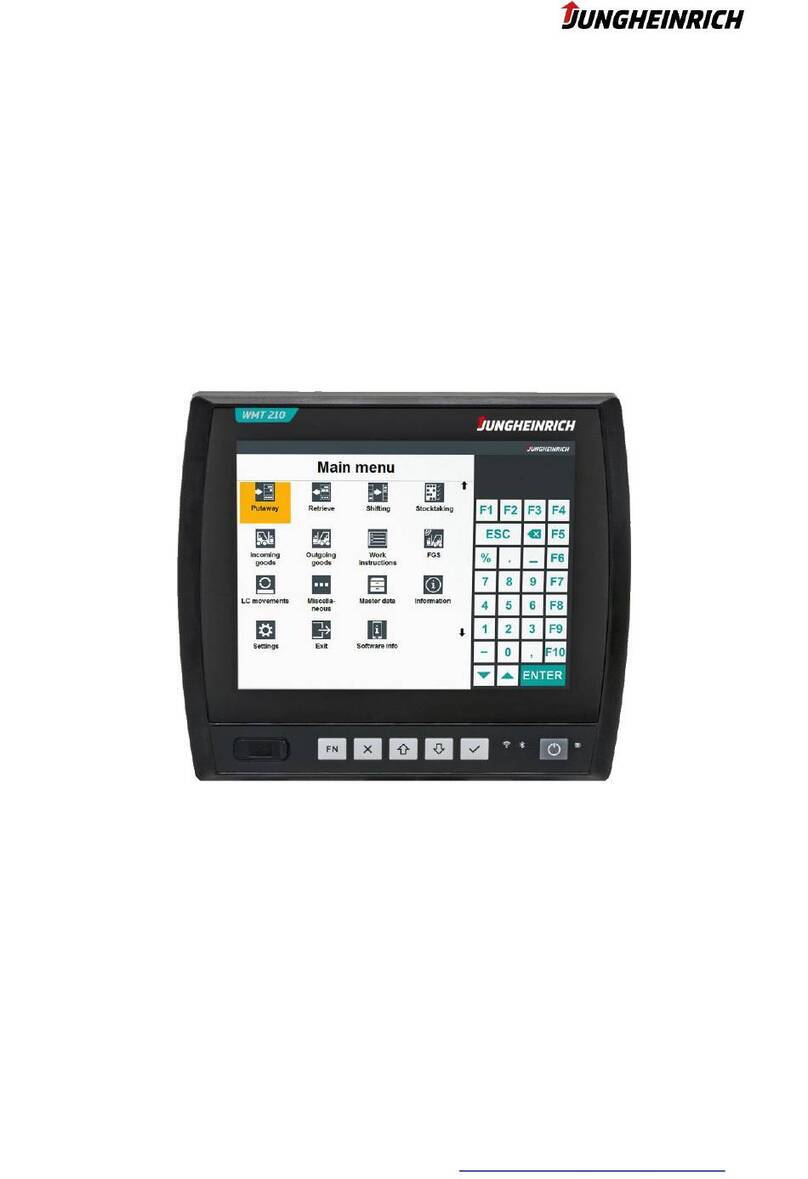
3
Revised 11 2023 Drawing No. LP0909
mounted in at least Zone 2 ATEX/IECEx/UKEX-Certified tool
accessible enclosure with a minimum ingress protection rating
of at least IP54 as defined in IEC/EN 60529.
- This device is open-type and must be mounted in a suitable
dusttight end-enclosure in accordance with articles 500 and
502 of the NEC and positioned so only the face of the
display is exposed.
- Must be wired using Division 2 wiring methods as specified
in article 501-4(b), 502-4(b), and 503-3(b) of the National
Electric Code, NFPA 70 for installation within the United
States, or as specified in section 19-152 of Canadian
Electrical Code for installation in Canada.
CONNECTING TO EARTH GROUND
Each operator panel has a chassis ground terminal on the back
of the unit. Your unit should be connected to earth ground. Steps
should be taken beyond connecting to earth ground to eliminate
the buildup of electrostatic charges.
The chassis ground is not connected to signal common of the
unit. Maintaining isolation between earth ground and signal
common is not required to operate your unit. But, other equipment
connected to this unit may require isolation between signal
common and earth ground. To maintain isolation between signal
common and earth ground care must be taken when connections are
made to the unit. For example, a power supply with isolation
between its signal common and earth ground must be used. Also,
plugging in a USB cable may connect signal common and earth
ground.1
1USB’s shield may be connected to earth ground at the host.
USB’s shield in turn may also be connected to signal common.
POWER SUPPLY REQUIREMENTS
The G10 requires a 10-30 VDC power supply. Your unit may
draw considerably less than the maximum rated power depending
upon the features being used. As additional features are used
your unit will draw increasing amounts of power. Items that could
cause increases in current are modules, additional on-board
communications, SD card, and other features programmed
through Crimson.
To ensure you do not exceed the capacity of your Graphite host
power supply, calculate the total power consumption required for
all of your planned modules. Each module’s maximum power
consumption is listed in the Specifications of their Product
Bulletin. The total power available for modules is listed in the
specifications of the Graphite host.
In any case, it is very important that the power supply is
mounted correctly if the unit is to operate reliably. Please take
care to observe the following points:
– The power supply must be mounted close to the unit, with
usually not more than 6 feet (1.8 m) of cable between the
supply and the operator interface. Ideally, the shortest
length possible should be used.
– The wire used to connect the operator interface’s power
supply should be at least 22-gage wire suitably rated for the
temperatures of the environment to which it is being
installed. If a longer cable run is used, a heavier gage wire
should be used. The routing of the cable should be kept
away from large contactors, inverters, and other devices
which may generate significant electrical noise.
– A power supply with an NEC Class 2 or Limited Power
Source (LPS) and SELV rating is to be used. This type of
power supply provides isolation to accessible circuits from
hazardous voltage levels generated by a mains power
supply due to single faults. SELV is an acronym for “safety
extra-low voltage.” Safety extra-low voltage circuits shall
exhibit voltages safe to touch both under normal operating
conditions and after a single fault, such as a breakdown of a
layer of basic insulation or after the failure of a single
component has occurred. A suitable disconnect device shall
be provided by the end user.
I/O MODULE INSTALLATION
The physical order of all installed modules must match the
modules order in Crimson. Torque screws to 6.0 pound-force inch
[96 ounce-force inch] (0.68 N m).
COMMUNICATING WITH THE G10
CONFIGURING A G10
The G10 is configured using Crimson®software. Crimson is
available as a no charge download from Red Lion’s website.
Crimson updates for new features and drivers are posted on the
website as they become available. By configuring the G10 using
the latest Crimson version, you are assured that your unit has the
most up to date feature set. Crimson software can configure the
G10 through the RS232 PGM port, USB port, or SD card.
The USB port is connected using a standard USB cable with a
Type B connector. The driver needed to use the USB port will be
installed with Crimson.
The RS232 PGM port uses a programming cable made by Red
Lion to connect to the DB9 COM port of your computer. If you
choose to make your own cable, use the “G10 Port Pin Out
Diagram” for wiring information.
The SD can be used to program a G10 by placing a configuration
file and firmware on the SD card. The card is then inserted into
the target G10 and powered. Refer to the Crimson literature for
more information on the proper names and locations of the files.
USB, DATA TRANSFERS FROM THE SD CARD
In order to transfer data from the SD card via the USB port, a
driver must be installed on your computer. This driver is installed
with Crimson and is located in the folder C:\Program Files\Red
Lion Controls\Crimson 3.0\Device\ after Crimson is installed.
This may have already been accomplished if your G10 was
configured using the USB port.
Once the driver is installed, connect the G10 to your PC with a
USB cable, and follow “Mounting the SD” instructions in the
Crimson 3 user manual.
WARNING: Disconnect all power to the
unit before installing or removing modules.
WARNING - Do not connect or disconnect cables
while power is applied unless area is known to be non-
hazardous. USB device port is for system set-up and
diagnostics and is not intended for permanent connection.
